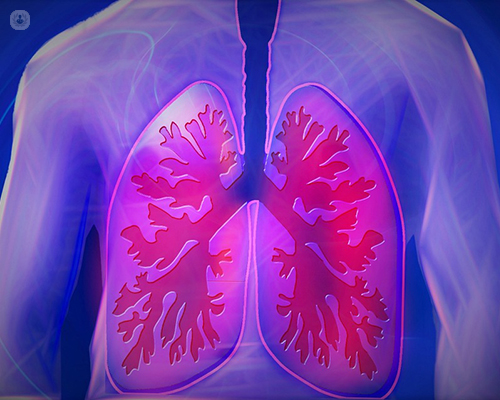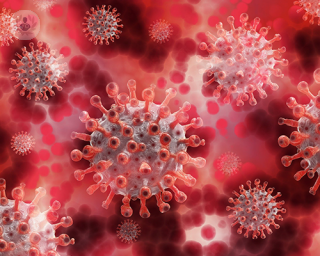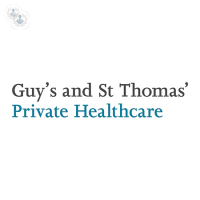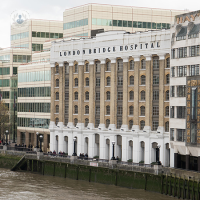Blood clots
What is a blood clot?
A blood clot helps to repair injured blood vessels. However, when blood becomes semi-solid, the flow of blood within the circulation system can be obstructed. If not treated quickly, a blood clot can travel to an organ and stop blood flow and oxygen, resulting in a life-threatening conditions. There are two types of blood clot:
- Arterial clot: These form in an artery and result in symptoms that appear quickly.
- Venous clot: These form more slowly than arterial clots but are still dangerous when left untreated.
A blood clot that prevents too much blood spilling from an injury is positive. However, if a blood clot forms in a healthy cell, it can turn into a thrombus, another type of blood clot, which leads to thrombosis.

What is the prognosis?
In some cases, blood clots can dissolve on their own. In other cases, a blood clot can obstruct a vein, causing a life-threatening condition.
Where in the body do blood clots typically occur?
Blood clots can occur in many different parts of the body. Typically, they can be found in:
- the heart, causing a heart attack
- the brain, causing a stroke
- the lungs, causing a pulmonary embolism
- other parts of the body such as the legs (most commonly), or less commonly the arms or abdomen - if a clot forms in one of the larger veins it is called deep vein thrombosis (DVT)
What are the main associated symptoms?
A blood clot can be asymptomatic (show no symptoms) or it can show symptoms which vary depending on where the obstructed blood vessel is.
If the blood clot affects a limb, most commonly a leg, there may be the following symptoms:
- a cramping sensation
- swelling in the affected limb
- pain
- discolouration of the skin (such as a reddish or blue tint)
If the blood clot affects the heart, brain or lungs, the following symptoms can occur:
- difficulty speaking
- blurred vision
- sudden shortness of breath and difficulty breathing
- pressure or a stabbing pain in the chest
If you experience any of the above symptoms, you must seek medical help immediately.
What medical tests are performed to detect a blood clot?
If you’re suspected of having a blood clot, you may receive:
- a physical examination
- venous ultrasound (ultrasound imaging of the veins in the body)
- CT angiography (a type of x-ray) of the chest, head and neck, abdomen or pelvis
What are the main causes?
Blood clots are not common in young healthy people, but, it is still possible for these individuals to suffer from blood clots. Risk factors for blood clots are:
- ageing
- being overweight or obese
- smoking
- using some birth control methods - check your combined pill, vaginal ring or contraceptive patch instructions to check if the risk is increased
- pregnancy
- family history of blood clots
- sitting too long, particularly when the legs are crossed
- an accident involving a traumatic injury
- high cholesterol
How can blood clots be prevented?
Lifestyle choices can help to prevent blood clots, and the most recommended lifestyle alterations include the following:
- stay in a healthy weight range
- exercise
- stay hydrated
- wear flight socks if taking a long flight – these can be bought over the counter at pharmacies
- don't smoke

How are blood clots treated?
Your specialist will advise you on the best course of treatment based on:
- if the blood clot is in a vein or artery
- if it is near a specific organ
- the risk of the blood clot causing serious complications – such as a stroke, heart attack or pulmonary embolism
Blood clots, as mentioned above, can dissolve on their own over time, but if the examination findings suggest that the clot will result in a life-threatening condition, you may be prescribed anticoagulants (also referred to as blood thinners) to reduce the clot size and the likelihood or more clots forming.
Alternatively, surgery may be necessary to remove a blood clot. This is usually used when the diagnosis shows the clot is life-threatening or in emergency situations (where severe symptoms may have already developed).
Which specialist treats blood clots?
Many specialists can be involved in the treatment of blood clots, depending on where the blood clot is located. For example, a cardiologist for the heart, a pulmonologist for the lungs, and a neurologist for the brain.
If you currently have or have had a blood clot, you may be referred to a haematologist (a blood specialist). A vascular surgeon performs the surgical removal of blood clots.
Is it true that cancer can increase the chances of getting a blood clot?
It is believed that cancer leads to both tissue damage and inflammation, and both put someone at a high risk of developing a blood clot.
Which cancers are the most likely to lead to a blood clot?
Brain cancer, ovary cancer, pancreatic cancer, colon cancer, lung cancer, kidney cancer, liver cancer, leukaemia, and lymphomas, are all cancers that are associated with a very high risk of blood clotting.
Can chemotherapy increase the risk of blood clots?
Unfortunately, yes, chemotherapy, particularly in chemotherapy that is specifically designed to treat multiple myeloma, can indeed increase the risk of blood clots.
How common are recurrent blood clots?
Patients who have previously suffered from a blood clot in either their lungs or their legs are at quite a high risk of suffering from either a recurrent blood clot in the lung or in the leg.













